
ATR unveils plans for hybrid-electric EVO turboprop
ATR aims to launch reengined and upgraded versions of its turboprop family—the ATR EVO—which will feature hybrid engines, lighter bio-sourced materials and innovative technologies “to enable significant improvements in performance, economics and sustainability.” The company published a request for information (RFI) to all relevant engine manufacturers and received backing for the launch from its shareholders, Airbus and Leonardo. According to the RFI, the engine-makers are to submit proposals to ATR by the end of June. That will be followed by more detailed discussions with them and potential airline customers, which could lead to a firm launch next year and an intended entry into service in 2030. According to ATR, the EVO will offer a 20% overall fuel improvement and 100% SAF compatibility.
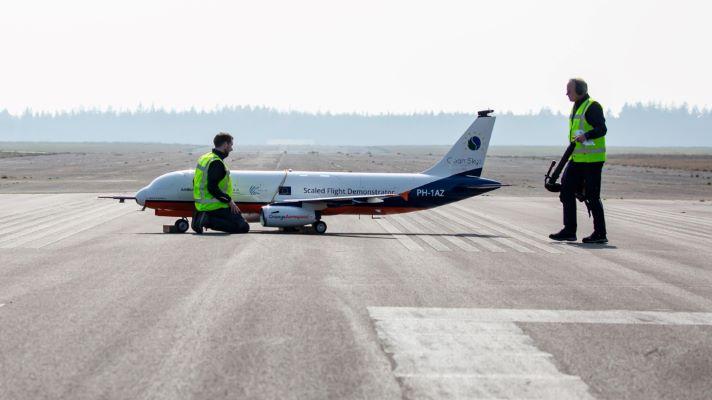
Europe to begin Clean Sky 2 scaled flight testing
A model of the Airbus A320, built under Europe’s Clean Sky 2 civil aeronautics research program to validate the viability of using scaled flight testing to complement wind tunnels, has entered flight testing. The Scaled Flight Demonstrator (SFD) has begun initial qualification flight testing in Deelen, Netherlands, and will be relocated to Grottaglie, Italy, for mission flight testing later in 2022. This second test campaign will build the database required to validate the scaled flight-testing approach. Airbus provided the demonstration goals and is supporting the program.

Birmingham Airport switches to renewable electricity
Birmingham Airport is using electricity generated solely from renewable sources, in the company’s latest step on its journey to net zero carbon by 2033. By switching to Bryt Energy, the airport and all its retail and food concessions—including Costa, Greggs, Burger King, World Duty Free and others—are now powered by electricity generated from a mix of solar, wind and hydro.
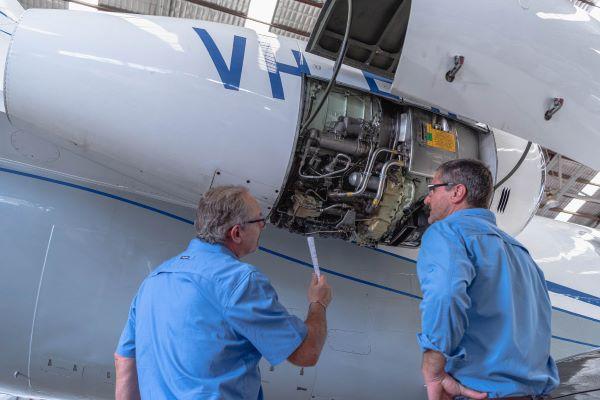
Australia’s Aviation H2 eyes ammonia-fueled, carbon-free propulsion
Aviation H2, an Australian startup that has set itself the aggressive goal of flying the country’s first hydrogen-powered aircraft by mid-2023, has selected a decarbonization path it says will allow use of existing engines, aircraft and infrastructure. The company plans to use liquid ammonia as a carbon-free fuel. Anhydrous ammonia has less than half the specific energy of kerosene, which reduces payload/range capability, but is lighter and easier to transport and store than hydrogen. Caption: Aviation H2 directors Christophe and Helmet Mayer (left) inspect the engine of a FalconAir Falcon 50.
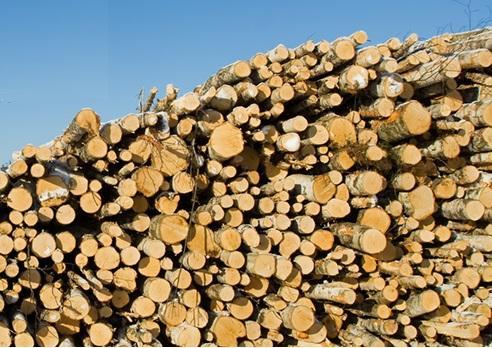
Swedish Biofuels scales up domestic SAF production
Swedish Biofuels plans to bring 400,000 metric tons (130 million gal.) of sustainable aviation fuel (SAF) annually to the Swedish market by building three new plants producing alcohol-to-jet (ATJ) fuel. Construction of the first plant is under way at Brista, close to Arlanda, with funding support from the European Commission. Producing 20,000 metric tons a year from sustainable ethanol, the plant is planned to begin delivering fuel in 2025.
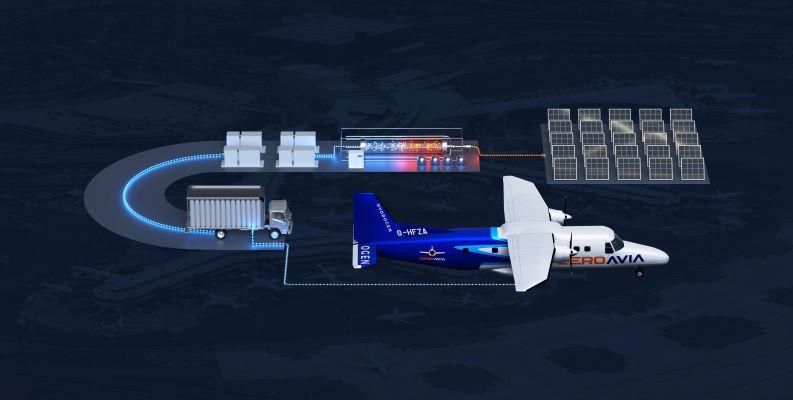
Shell hydrogen to support ZeroAvia flight tests
ZeroAvia is developing the Hydrogen Airport Refueling Ecosystem to support its hydrogen-electric powertrain retrofits. Energy company Shell, already a strategic investor in ZeroAvia, is to supply hydrogen to the zero-emission propulsion startup’s base in California to support flight testing of its fuel-cell powertrain. Shell will supply compressed, low-carbon hydrogen to the facility in Hollister as well as to other locations in the Western US to support planned demonstration flights. Shell will also build two commercial-scale mobile refuelers for use at ZeroAvia’s R&D site.

United inks SAF deal with Neste
United Airlines signed a new purchase agreement with Neste for the right to buy up to 52.5 million gallons over the next three years for United flights at Amsterdam’s Schiphol Airport, and potentially other airports as well. Neste will provide United with 2.5 million gallons of SAF in Amsterdam in the first year. United will also have the right to purchase up to 20 million gallons in the second year, and up to 30 million gallons in the third year, at Amsterdam or other locations that Neste can supply throughout the globe, as Neste increases its SAF production.

KLM, Edmonton airport further collaborate on sustainability initiatives
KLM and Edmonton International (YEG) signed an agreement to collaborate further on sustainability initiatives. The MOU comes after the Dutch flag carrier operated a service from Amsterdam (AMS) to the Canadian airport as part of the SkyTeam alliance’s Sustainable Flight Challenge. The competition sees 16 member airlines attempting to stage the most sustainable flight possible. KLM Flight 675 landed at YEG on May 7 and was operated using a Boeing 787-10, powered by a fuel blend consisting of 39% sustainable aviation fuel (SAF). In addition, a number of new weight-reduction measures were taken, including using AI modeling to predict inflight water requirements.
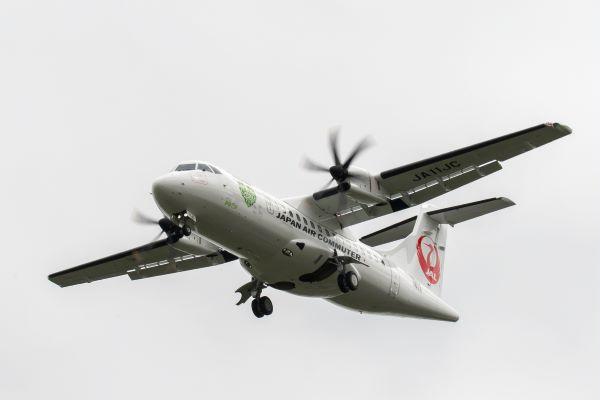
Japan Air Commuter ATR 42-600 to fly with SAF blend
Japan Air Commuter’s (JAC) latest ATR 42-600 will undertake the first leg of its ferry flight from Toulouse to Japan with a blend including SAF. The company’s ninth of 11 ATR aircraft wears a specific livery representing the leaves of Kaikouzu, the tree of Kagoshima Prefecture. These leaves are the symbol of the preservation of nature in this country. The Japanese airline flies Yakushima, Amami Oshima, Tokunoshima, Okinawa, which are all World Natural Heritage Sites, as well as many other areas rich and diverse in wildlife.
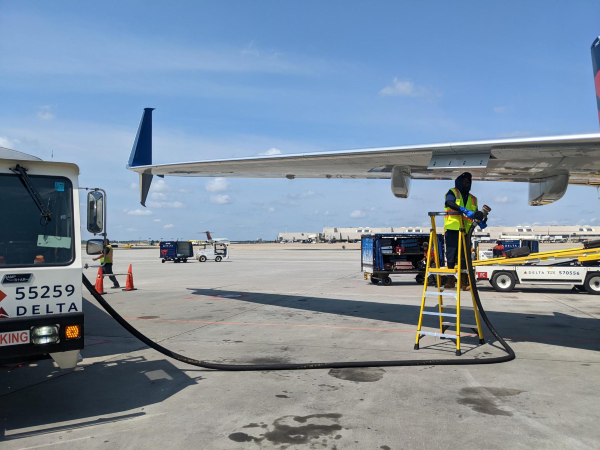
Delta makes 737 SAF flight
Delta Air Lines participated in the SkyTeam Alliance’s Sustainable Flight Challenge—an initiative where partner airlines share learnings and innovations with the common goal of reducing the industry’s carbon footprint—when it flew a Boeing 737-900ER powered by a fuel blend that included 400 gallons of SAF. The May 3 flight set a record for the largest amount of SAF used on a flight out of Atlanta. Supplied through Delta’s partnership with Gevo, SAF reduces the lifecycle emissions of greenhouse gases up to 80% compared to fossil jet fuels. Specific features of the aircraft, including new landing gear tires that reduce plane weight by 100 pounds and winglets that reduce drag, increase fuel efficiency and reduce emissions.

ZeroAvia takes second Dornier 228 as zero-emission testbed
Hydrogen-electric propulsion startup ZeroAvia took delivery of a second Dornier 228 regional turboprop. Based in the US, the 19-seater will undergo the same modification as a Do 228 in the UK which has been fitted with ZeroAvia’s ZA600 fuel-cell powertrain. Based at ZeroAvia’s headquarters in Hollister, California, the second aircraft will be used for test and demonstration flights in parallel with flight tests of the first Do 228, which is based in Kemble, England. Both aircraft will be used to support efforts to certify the 600-kW ZA600 hydrogen-electric powertrain in 2024.
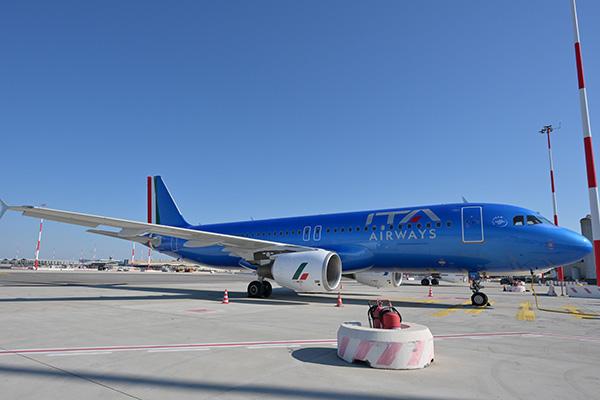
ITA Airways operates first sustainable flight
Italy’s ITA Airways operated its first sustainable flights in May. The medium-haul flight from Rome Fiumicino-Amsterdam Schiphol Airbus A320 was the first of two flights the company has been organizing to take part in The Sustainable Flight Challenge, the international competition presented by SkyTeam. The second flight was operated on the intercontinental Rome Fiumicino-New York JFK A330 route. SkyTeam’s Sustainable Flight Challenge is designed to challenge the aviation industry by stimulating and accelerating innovation and change towards a more sustainable future and the decarbonization of the skies.
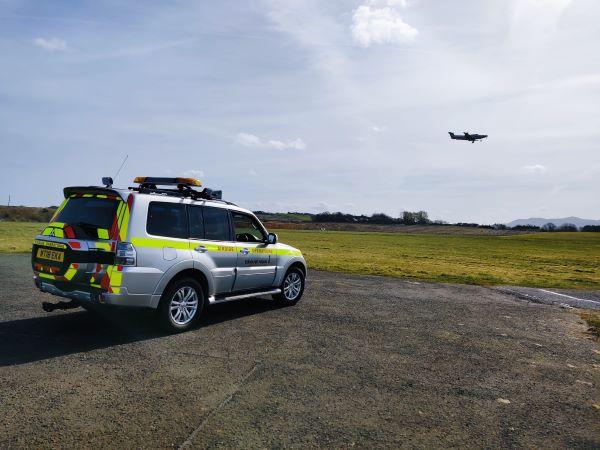
Edinburgh Airport vehicles powered by vegetable oil
Vehicles operating at Edinburgh Airport are now being powered by vegetable oil as the airport continues to look at ways of reducing its emissions. Thirty-four vehicles have made the change from diesel to Hydrotreated Vegetable Oil (HVO), which is a renewable diesel alternative that eliminates up to 90% of net carbon dioxide emissions whilst also offering significant savings on nitrogen oxide, particulate matter and carbon monoxide emissions. There are plans for at least another thirty vehicles to make the switch to HVO in the next few weeks and months, and the airport has installed an HVO fuel pump on campus.
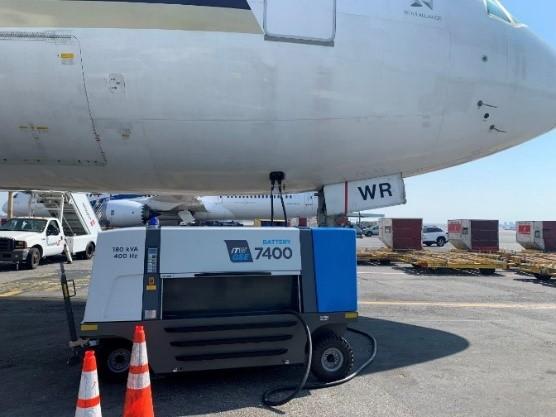
JFKIAT introduces eGPU pilot program at JFK T4
JFKIAT, the operator of Terminal 4 at New York’s John F. Kennedy International Airport, launched a 60-day pilot for the use of a battery-driven ground power unit (eGPU) provided by ITW GSE, a ground support equipment manufacturer. The new trial program introduces battery-driven ground power units for aircraft at T4 as an alternative to diesel powered GPUs. At a typical gate GPU is powered by the grid, but aircraft parked at hardstands require portable GPUs which are traditionally powered by diesel. The eGPU is a more sustainable alternative to diesel-powered GPUs. Large capacity eGPU units are especially suited for jumbo aircraft that require higher battery capacity. According to ITW, exchanging only one diesel GPU with an eGPU reduces carbon dioxide emissions by 90% and nitrogen oxide emissions by 95%. This innovative technology is expected to cut more than 190,000 lbs. of CO2 emissions per year at T4.

Aemetis gets more US airline support for California SAF plant
US-based renewable fuels company Aemetis secured another airline customer for a plant being built in Riverbank, California, to produce SAF from renewable hydrogen and orchard waste. JetBlue Airways has signed an offtake agreement valued at $530 million for 125 million gal. of 40% blended SAF over 10 years. Aemetis has previously announced agreements with eight oneworld alliance member airlines for a total of 350 million gal. of 40% blended SAF to be delivered to San Francisco International Airport over seven years beginning in 2024. Delta Air Lines has signed an offtake agreement for 250 million gal. over 10 years.
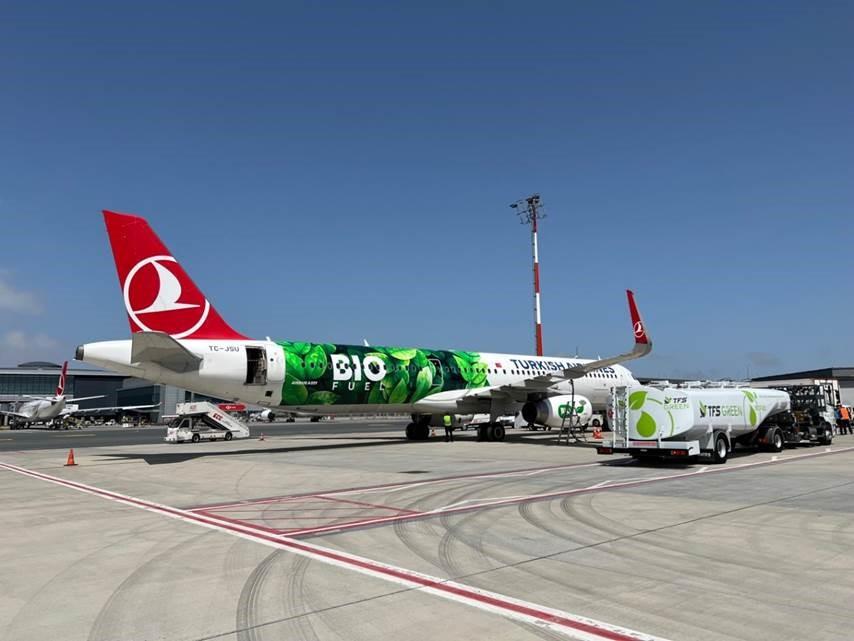
Turkish Airlines operates first SAF flight
Turkish Airlines stepped up its sustainability efforts with the first operational flight of an Airbus A321 utilizing a range of environment-friendly measures. The aircraft―adorned with appropriate branding―operated an Istanbul-Stockholm service while using sustainable aviation fuel (SAF). In the cabin, single-use plastics were largely eliminated, replaced with a variety of sustainable materials such as paper cups, wooden condiment containers and blankets and pillow covers made wholly from certified recycled material. Turkish Airlines’ SAF-enabled flights will be operated between Istanbul and Oslo, Gothenburg, Copenhagen, Paris and London, as well as Stockholm.
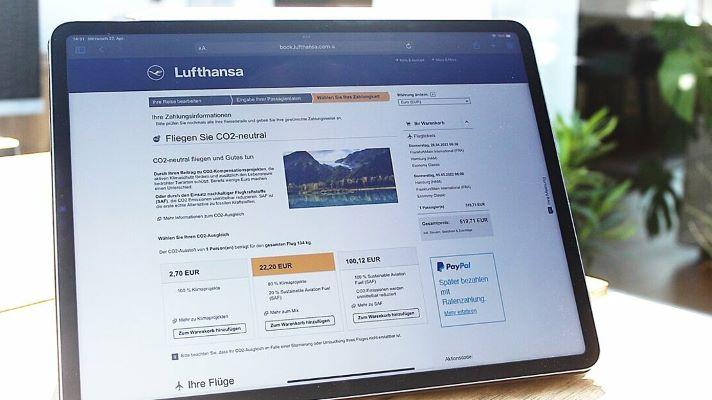
Lufthansa integrates option for carbon-neutral flying into booking
Lufthansa customers can now easily minimize carbon emissions of their flights. After flight selection, they can further choose one of three options to fly CO2-neutral. The first option is to use SAF that is currently produced from residual biogenic materials and directly reduces CO2 emissions. A second option is to using high quality carbon offset projects run by the non-profit organization myclimate in Germany and other countries worldwide. The third option is a combination of the first two options. An option can be selected while booking. Payment is made when buying the flight ticket, thus making CO2-neutral flying for passengers significantly easier. During the second quarter of 2022, the same service will also be available for other Lufthansa Group airlines: Austrian Airlines, Brussels Airlines and SWISS.
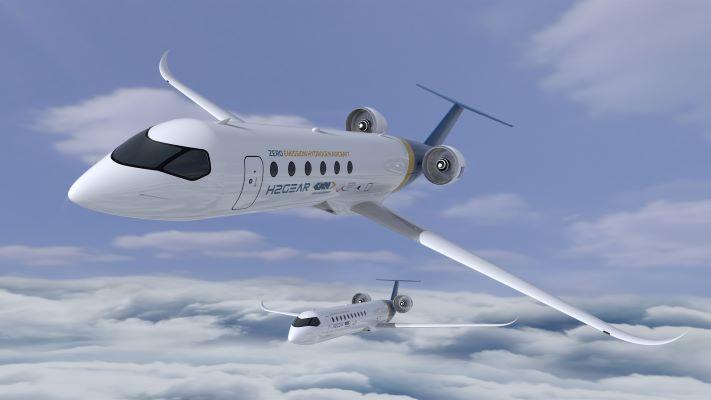
EasyJet partners with GKN Aerospace
UK-based LCC easyJet is working with GKN Aerospace on two projects to develop hydrogen propulsion systems. EasyJet is supporting GKN’s UK government-backed H2Gear project to develop a liquid-hydrogen (LH2) fuel-cell propulsion system for regional aircraft and the Swedish government-backed H2Jet project to enable hydrogen combustion in turbine engines powering medium-range aircraft. Part of EasyJet’s support for GKN on both projects will include exploring options for flight demonstration. H2Jet is a two-year Swedish national project to validate component and subsystem technologies for hydrogen combustion in turboprop or turbofan engines powering medium-range single-aisle aircraft for potential entry into service on intra-European routes in 2035.
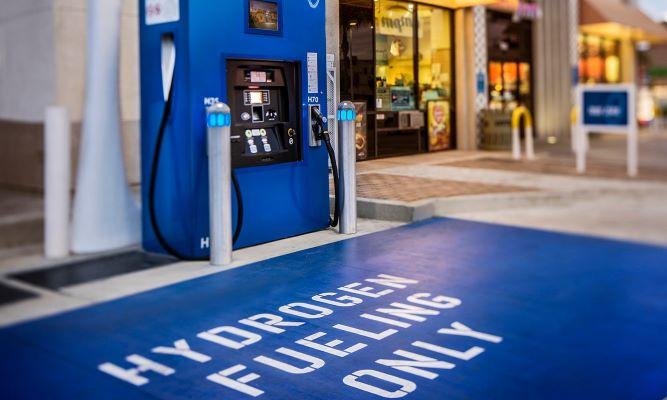
Edmonton airport to test clean technologies, hydrogen fuel
Edmonton International Airport (EIA) is committing to using its ecosystem and ESG leadership role to become a major driver of demand for hydrogen fuel and to open the airport as a new home for piloting emerging hydrogen technologies. As part of the Canadian Hydrogen Convention held in Edmonton, EIA has several new agreements with several multi-national and Canadian companies. These include agreements with Mitsui and Toyota, multiple Canadian and Alberta companies, and an investment agency of the government of Japan.

Refuel Energy to build Toronto SAF plant
Canadian startup Refuel Energy has announced plans to build a 3,000 barrel/day (126,000 gal) renewable fuels plant in southern Ontario. A final investment decision is expected in 2023. If approved, production would start in 2025. The Refuel YYZ plant would produce both renewable diesel and sustainable aviation fuel (SAF) using Haldor Topsoe’s HydroFlex and H2bridge technologies. The plant will produce HEFA SAF from waste fats, oils and greases such as regionally sourced used cooking oil, animal fats and non-edible food crops.
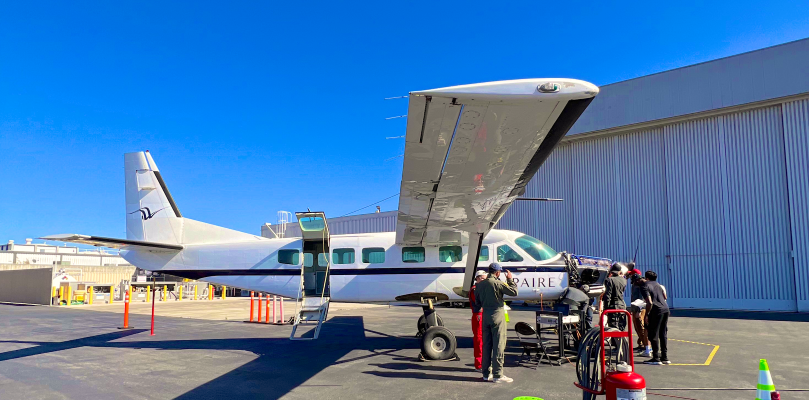
Ampaire ground-tests hybrid-electric Caravan
Ampaire began ground testing a Cessna Grand Caravan modified to hybrid-electric propulsion. The Eco Caravan is planned to fly by year-end and the startup is aiming for FAA supplemental type certification of the modification by mid-2024. The Eco Caravan has an integrated hybrid-electric propulsion system producing more than 750 shp and replacing the Grand Caravan’s Pratt & Whitney Canada PT6A turboprop. The system is built around an unidentified combustion engine and the battery pack is housed in the underfuselage cargo pod. On average routes flown by a Caravan operator, hybrid propulsion is said to provide fuel savings of more than 50% while still carrying nine passengers. For short hops that can be flown mostly on batteries, the savings are up to 70%.
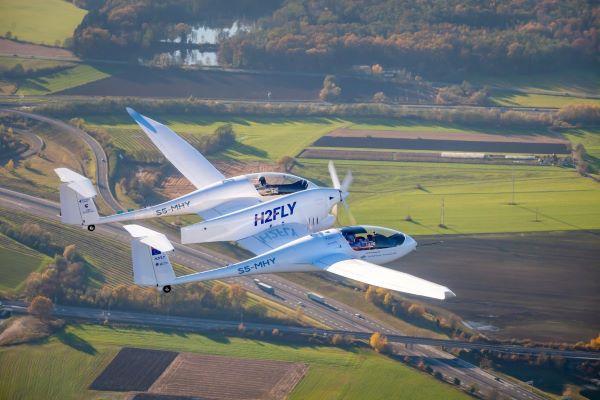
H2Fly completes first flight on hydrogen-electric power
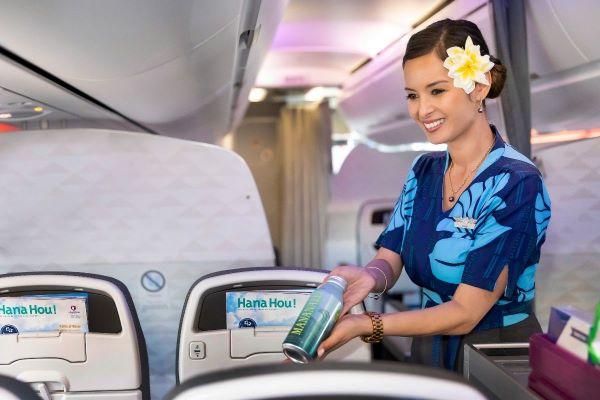
Hawaiian to replace plastic bottles with recyclable aluminum
Hawaiian Airlines is bringing Mananalu, the water company founded by Hawaiʻi environmental activist and celebrity Jason Momoa, to its Premium Cabins to replace plastic water bottles with infinitely recyclable aluminum bottles. The airline is distributing Mananalu’s 16-ounce aluminum bottle to Premium Cabin guests on all US East Coast and international flights. The recyclable product will also replace plastic water bottles sold on Hawaiian’s Pau Hana snack cart on the carrier’s flights between Hawaiʻi and its 16 continental U.S. gateway cities. Hawaiian anticipates eliminating approximately 142,000 plastic bottles from its transpacific operations each year through its partnership with Mananalu.
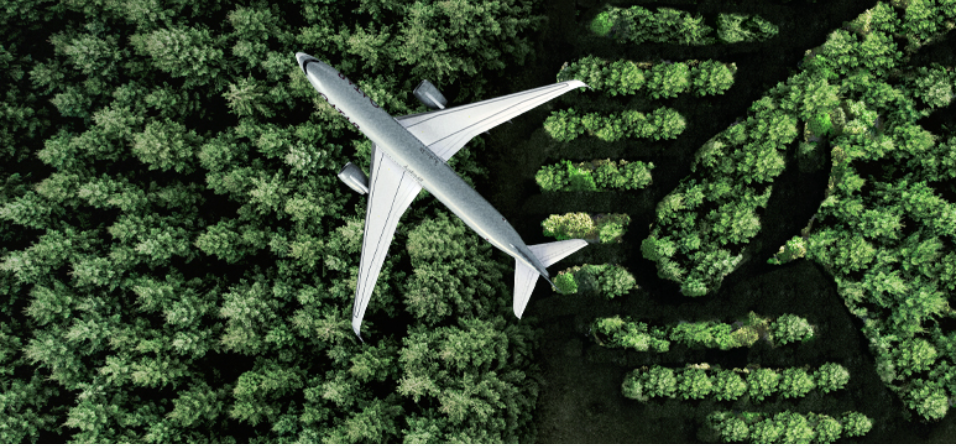
Qatar Airways launches voluntary carbon offset program
Qatar Airways launched a voluntary carbon offset program for corporate customers. This initiative will enable corporate and trade clients to offset their own carbon emissions via a dedicated web portal at any time before or after a flight. The Qatar Airways voluntary carbon offset program allows corporate clients to offset or reduce the carbon emissions associated with their business travel, and empowers them to make sustainable choices.

Cathay introduces Asia’s first SAF corporate program
Cathay Pacific is launching a corporate sustainable aviation fuel (SAF) program, allowing companies to purchase SAF for its flights and reduce Scope 3 carbon emissions from business travel or cargo transportation. The program will start with eight companies; AIA, Airport Authority Hong Kong (AAHK), DHL Global Forwarding, HSBC, Kintetsu World Express (KWE), PwC China, Standard Chartered, and Swire Pacific, and will be the first of such kind in Asia Pacific region. PetroChina and Shell are the fuel supply partners and is also the first uplift of SAF at Hong Kong International Airport. Created from cooking oil and animal fat waste, the SAF blend is supplied from Neste’s refinery in Finland and sold to Cathay via Shell. Cathay announced in 2021 that it is targeting of 10% SAF for our total fuel use by 2030.
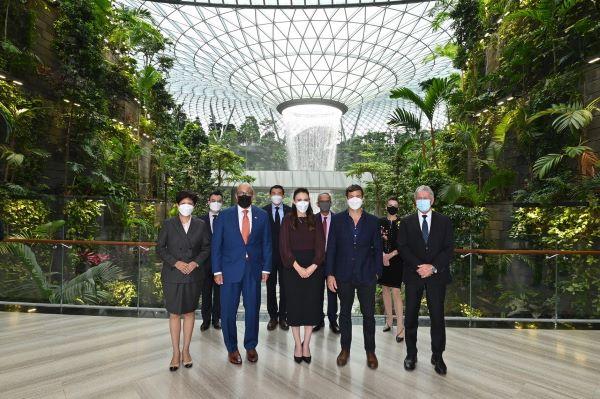
New Zealand, Singapore ink sustainable aviation agreement
The governments of Singapore and New Zealand signed a memorandum of arrangement (MOA) to drive the development of sustainable aviation between the two countries. The pact was signed April 19 during New Zealand Prime Minister Jacinda Ardern’s visit to Singapore and Japan. The MOA will see Singapore and New Zealand collaborate and share information on sustainable aviation, involving policy and regulation, industry development, infrastructure planning and provision and workforce transformation initiatives. These initiatives include coordinating research and development, trials of sustainable aviation fuel (SAF) and facilitating the development of secure sustainable-fuel supply chains in the Asia-Pacific region. Also under study are the scale, costs and technical and commercial viabilities of developing “green lanes” between New Zealand and Singapore, to encourage the gradual passenger increase on SAF-operated flights. Pictured: New Zealand Prime Minister Jacinda Ardern (center) and Singapore transport minister at Changi Airport.
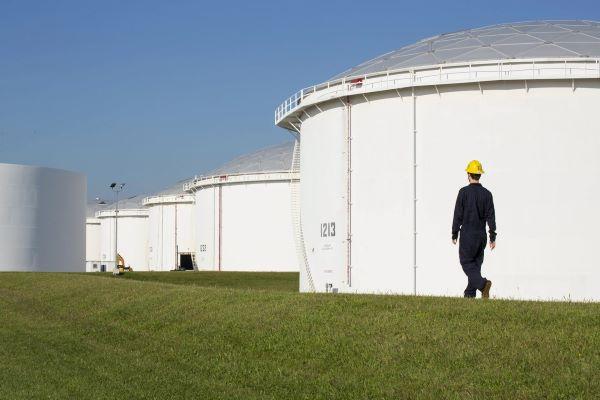
US-based Colonial Pipeline to transport SAF
Colonial Pipeline, the largest petroleum pipeline system in the US, will allow its system to be used to transport sustainable aviation fuel (SAF). Colonial operates 5,500 mi. of pipeline that runs form Houston, Texas to New York. In the limited qualities currently available, SAF is transported by truck, but more and larger production facilities are coming online across the US and more customers are signing multiyear offtake agreements with SAF producers. Colonial currently delivers fuel directly to seven major airports, including Hartsfield Jackson International Airport, Nashville International Airport, Charlotte/Douglas International Airport, Piedmont Triad International Airport, Raleigh Durham International Airport, Baltimore Washington International Thurgood Marshall Airport, and Washington Dulles International Airport.
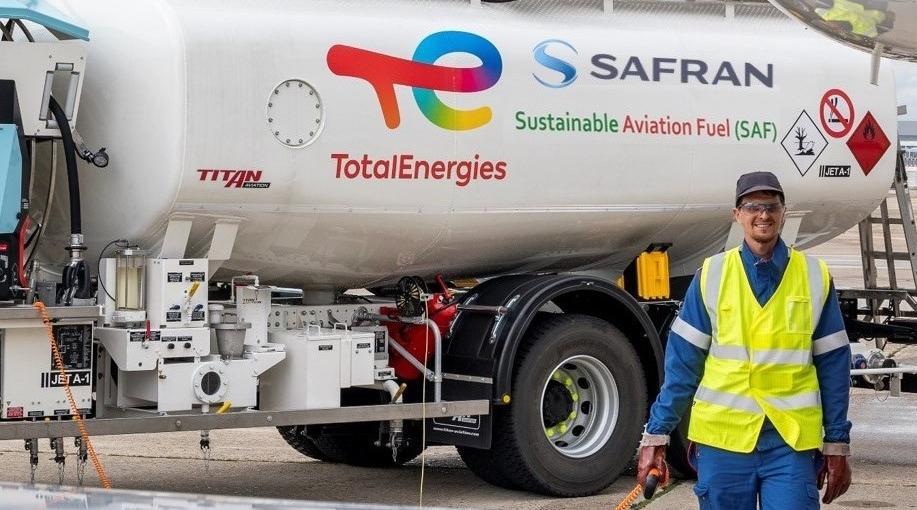
Mitsubishi teams to produce SAF in Japan
Mitsubishi and Eneos, Japan’s largest oil company, are jointly to study the establishment of a domestic supply chain for sustainable aviation fuel (SAF), targeting deliveries beginning in 2027. On April 14, Eneos and France’s TotalEnergies announced a collaboration to conduct a feasibility study into the production of SAF at Eneos’ Negishi Refinery in Yokohama, which is located close to Tokyo’s Narita and Haneda airports. The Tokyo government has set the goal of replacing 10% of jet fuel consumption in Japan with SAF by 2023, but there is no domestic production. TotalEnergies is providing experience in feedstock procurement and SAF production technology. The proposed facility would produce 300,000 metric tons of SAF a year, mainly from used cooking oil and animal fats. The goal is to begin production of SAF in Japan around 2025.
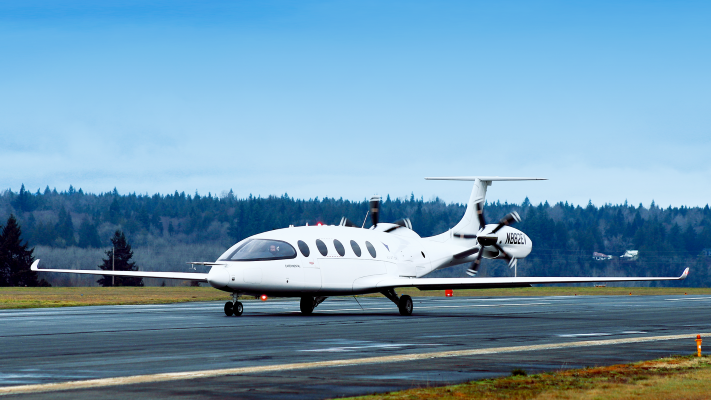
US regional Cape Air inks LOI with Eviation for electric aircraft
US regional airline Cape Air signed a letter of intent (LOI) with Seattle-area venture Eviation Aircraft for the purchase of 72 Alice electric aircraft. Hyannis, Massachusetts-based Cape Air is following a path similar to that taken with the Tecnam P2012 Traveller, where the airline first signed an LOI with the manufacturer and then worked closely with them on design and development of the new aircraft before signing firm orders. The nine-passenger P2012 piston twin is replacing the airline’s fleet of aging Cessna 402Cs. But Cape Air has a vision of transitioning to an all-electric fleet over the next 5-10 years. In addition to Eviation’s nine-passenger Alice, the airline is looking at Tecnam’s P-Volt electric version of the P2012.

Cement CO2 to fuel German SAF program
In a bid to make both air travel and cement production more sustainable, three companies from different industry backgrounds have come together to produce sustainable aviation fuel (SAF) using CO2 captured from cement production. The Concrete Chemicals project brings together South African chemicals company Sasol, Mexican cement producer Cemex, and German renewable energy company Enertrag. Cemex will capture CO2 from cement production, Enertrag will produce green hydrogen using renewable electricity and new-business unit Sasol ecoFT will contribute Fischer-Tropsch technology to synthesize liquid e-fuels. The project will be based at the Cemex plant in Rudersdorf, Germany, and the consortium has prepared applications for European-level funding. In the first phase of the project, 15,000 metric tons (4.9 million gal) a year of e-kerosene will be produced using 100 metric tons per day of captured CO2 and 12 metric tons per day of hydrogen produced on-site. The second phase will enable the production of 35,000 metric tons of e-kerosene a year and will require 300 metric tons per day of captured CO2 and 40 metric tons a day of hydrogen delivered via pipeline from a hydrogen hub planned to be built in East Germany.
The aviation industry around the world continues to push multiple environmental initiatives to the fore as sustainability targets get closer. Besides, sustainability aviation fuels (SAF), hydrogen is gaining momentum as the zero-emission aviation fuel of the future but requires massive investment in new infrastructure, as well as completely new propulsion systems or aircraft designs to be used to its full potential. Here are several initiatives making the headlines in April and May 2022.
